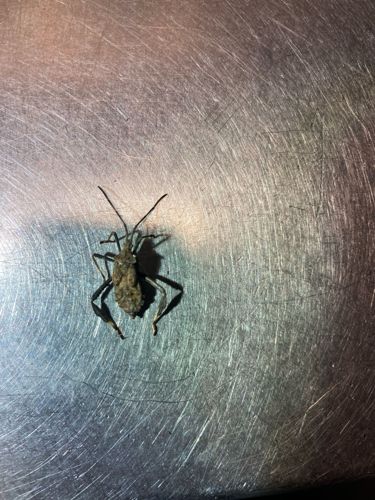Wheel Bug
Scientific Name: Arilus cristatus
Order & Family: Order: Hemiptera, Family: Reduviidae (Assassin Bugs)
Size: Adults typically range from 1 to 1.5 inches (25-38 mm) in length.

Natural Habitat
Wheel bugs are commonly found in gardens, orchards, agricultural fields, wooded areas, and other places with abundant vegetation where their prey is present. They often reside on shrubs, trees, and tall herbaceous plants.
Diet & Feeding
The wheel bug is a predatory insect, feeding on a wide variety of other insects, including caterpillars, Japanese beetles, flies, true bugs (like stink bugs), and even other assassin bugs. They do not feed on plant sap or detritus.
Behavior Patterns
Wheel bugs are solitary predators. They move slowly and deliberately, often camouflaged among vegetation. They capture prey using their strong forelegs and then pierce the prey with their rostrum to inject digestive enzymes, liquefying the insides before sucking them out. They are known to emit a strong odor as a defense mechanism when disturbed.
Risks & Benefits
Risks: Wheel bugs can deliver a painful bite if handled, though they are not aggressive towards humans. The bite is comparable to a bee sting, causing localized pain and swelling, but it is not venomous or medically significant. Benefits: They are highly beneficial insects in gardens and agricultural settings as they prey on many common insect pests, helping to control pest populations naturally and reducing the need for chemical pesticides.
Identified on: 8/7/2025